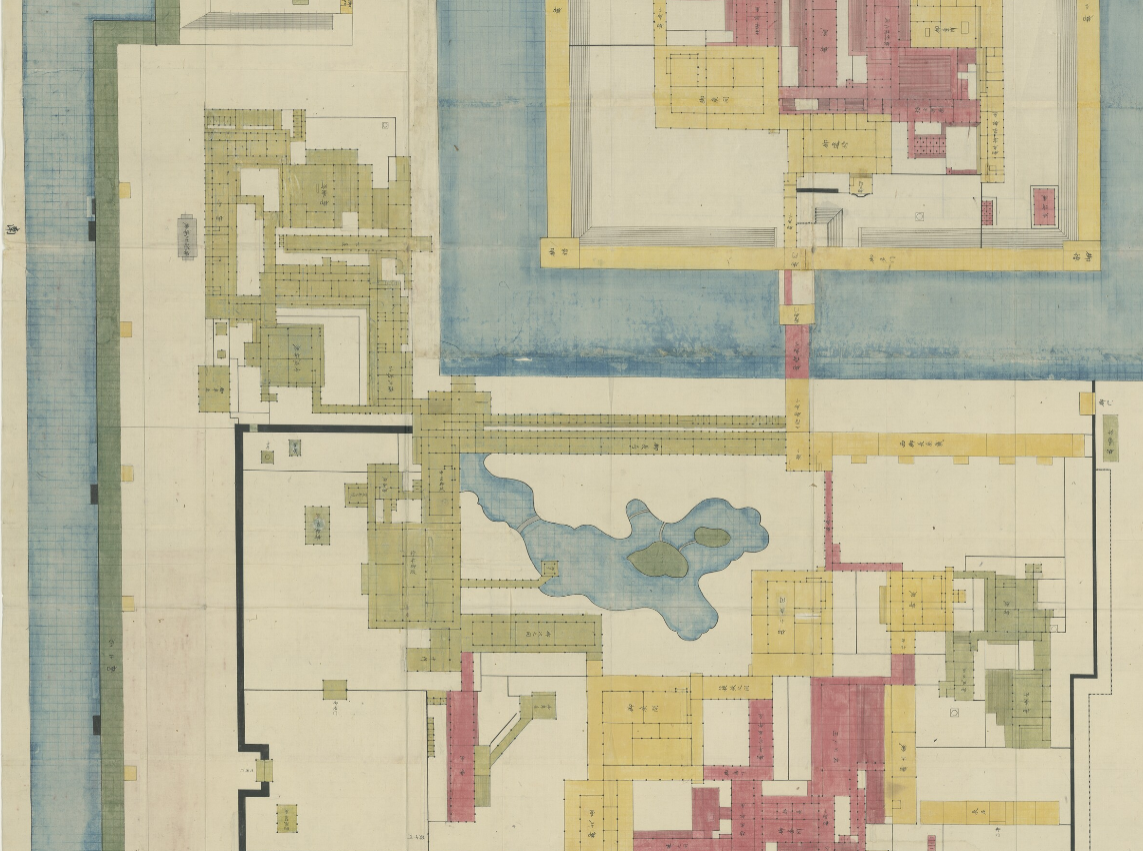[Library Network] Kyoto University Rare Materials Digital Archive: 249 Nijo Castle Documents of Nakai Collection newly released

Among plans and other documents of Nakai Collection, 249 items regarding Nijo Castle were digitized and publicized in the digital archive under the joint project with Kyoto City in academic year 2017. The investigation of the materials to compile bibliographic data was conducted by Nijo Castle Office of Kyoto City and researchers of Faculty of Letters, Kyoto University and Kyoto University Museum, while Kyoto University Library created the digital images of the materials and publicized them on February 27, 2018.
Kyoto University Rare Materials Digital Archive: Nijo Castle Documents
https://rmda.kulib.kyoto-u.ac.jp/en/collection/nakai/nijojo
Nijo Castle, built by Tokugawa Ieyasu, founder of the Tokugawa Shogunate, in 1603, underwent large-scale remodeling from 1624 to prepare for Emperor Go-Mizunoo’s visit to the castle in 1626. The rare materials digitized this time are indispensable for the research of Nijo Castle and the history of Kyoto, because these are the plans and other documents regarding Nijo Castle handed down in the Nakai Family, a Tokugawa Government's master carpenter family in Kyoto. Some of the plans have many small papers attached to them, which show the changes in the arrangement of the rooms as a result of the remodeling in the 17th century.
Many rare materials, after a long period of time, have become too fragile to make them physically available to the public and, in order to preserve them for the future generations, the use of the actual materials should be limited. For example, maps and plans depicted on large sheets of paper require a large space to unfold them and careful handling. Kyoto University Rare Materials Digital Archive provides open access to the digital images of such materials in high definition with convenient functions, such as smooth zooming in and out.
Nakai Collection also includes other valuable materials: plans of Kyoto Imperial Palace, temples, shrines and other architectures in Kyoto, and other documents related to the Nakai Family. Kyoto University will continue our effort to promote open access to these important rare materials.
- Solved: [Trouble] Access to Project Euclid e-journals is rejected (2025-06-20)
- Maintenance: E-Journal and Database Authentication System (6/20, 6/23) (2025-06-19)
- Library Network Service will temporarily stop on August 14. (2025-06-03)
- Maintenance: JapanKnowledge (Jun. 2, 2025) (2025-06-02)
- Solved [Maintenance] "KURENAI" has been temporarily inaccessible (2025-05-29)
- Solved: [Library Network] Access to American Chemical Society is rejected (2025-05-13)
- 【Main Library/RIMS Library】In Commemoration of the Abel Prize: Exhibition of Books and Papers Related to Dr. Masaki Kashiwara” is being held. (2025-05-13)
- Service restored - [Trouble]Kyoto University Rare Materials Digital Archive (Apr. 28) (2025-04-28)
- [Library Network] Conditions of Use and Licensing Restrictions for E-Resource (2025-04-25)
- [Library Network] Released YouTube Shorts Video: "A Must-See for Young Researchers! The First Step to Open Access" (2025-04-18)